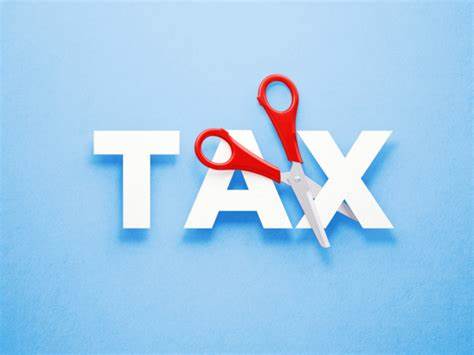The Budget of 2023 has introduced a new tax regime, and as the deadline for filing taxes is approaching, individuals must assess their position and decide between the old and new tax regimes based on their interests and plan their financials. In this discussion, we will compare the two tax regimes and help calculate their tax liabilities. To calculate your tax liability under each rule, you will need to gather the necessary financial information, including your income, deductions, exemptions, and investments. With this data, you can utilize online tax calculators or consult with a tax professional who can help you determine the tax payable under both regimes. You can make an informed decision based on your interests and financial goals by comparing the results.
Key Differences between old and new tax regime
The primary distinction between the two tax regimes lies in the distribution of tax slabs. The old tax regime consists of 7 slabs, while the new regime has 4 slabs. To provide further clarification, I have prepared a chart illustrating the tax slabs under each regime.
| Income Slab | Old Tax Regime | New tax Regime
(until 31st March 2023) |
New Tax Regime
(From 1st April 2023) |
| ₹0 – ₹2,50,000 | – | – | – |
| ₹2,50,000 – ₹3,00,000 | 5% | 5% | – |
| ₹3,00,000 – ₹5,00,000 | 5% | 5% | 5% |
| ₹5,00,000 – ₹6,00,000 | 20% | 10% | 5% |
| ₹6,00,000 – ₹7,50,000 | 20% | 10% | 10% |
| ₹7,50,000 – ₹9,00,000 | 20% | 15% | 10% |
| ₹9,00,000 – ₹10,00,000 | 20% | 15% | 15% |
| ₹10,00,000 – ₹12,00,000 | 30% | 20% | 15% |
| ₹12,00,000 – ₹12,50,000 | 30% | 20% | 20% |
| ₹12,50,000 – ₹15,00,000 | 30% | 25% | 20% |
| >₹15,00,000 | 30% | 30% | 30% |
Apart from changes in tax slab, the following deductions can be claimed under the new tax regime for calculating liable tax payable income:
- Standard Deduction: Similar to the old regime, the new regime allows for a standard deduction of up to Rs 50,000 under Form 16. This deduction reduces the taxable income for all individuals.
- Family Pension: Under the new regime, individuals receiving family pensions can claim a deduction of either Rs 15,000 or one-third of the pension amount, whichever is lower. This deduction helps reduce the taxable portion of the family pension.
- Surcharge: Individuals with a salary above Rs 50 lakhs will be subject to a surcharge of 4%. The surcharge is an additional tax imposed on top of the regular tax liability for high-income earners.
- Rebate under Section 87A: The new regime allows for a rebate of up to Rs 25,000 under Section 87A. This rebate is applicable for individuals with a total income below a specified threshold, helping to reduce the tax liability further.
- No Deductions for House Rent Allowance, Home Loan Interest, and tax saving Investments: Unlike the old regime, the new regime does not provide deductions for House Rent Allowance (HRA)& home loan interest (Sec 54), and investments made under Section 80C & 80D (such as ELSS, NPS, SSY). These deductions were previously available in the old regime to reduce taxable income.
The old tax regime included the following more deductions, which now have been omitted under the new tax regime:
- Deduction for medical expenses: This deduction is available to taxpayers who incur medical expenses for themselves, their spouse, their dependent children, and their parents. The deduction is equal to the actual amount of medical expenses incurred, up to a maximum of Rs. 50,000.
- Deduction for donations to charitable organizations: This deduction is available to taxpayers who donate to charitable organizations. The deduction is equal to the actual amount of donation made, up to a maximum of 50% of the taxpayer’s adjusted gross income.
Case-Based Calculation:
We have taken two scenarios to elaborate on the difference between regimes and investors can calculate their tax liability based upon insights from the following scenarios.
Scenario 1
Suppose an individual, with an annual income of 7.5lakhs, who has investment under tax saving schemes and doesn’t claim HRA:
Old Tax Regime:
Income: 7,50,000
Standard Deduction: 50,000
Additional Deduction: 1,50,000 (under 80C)
Total liable Income: 5,50,000
Tax liable: 22,500
New Tax Regime:
Income: 7,50,00
Standard Deduction: 50,000
Additional Deduction: –
Total liable Income: 7,00,000
Rebate: 25,000
Tax liable: 0 (according to new tax slab)
Here, it is beneficial to opt for the new tax regime
Scenario 2
Suppose an individual, with an annual income of 15.5lakhs, who has investment under tax saving schemes and claims home loan interest deductions for a self-occupied property:
Old Tax Regime:
Income: 15,00,000
Standard Deduction: 50,000
Additional Deduction: 2,00,000 (Sec 54)
1,50,000 (Sec 80C)
50,000 (Sec 80D)
Total liable Income: 10,50,000
Tax liable: 1,27,500
New Tax Regime:
Income: 15,00,000
Standard Deduction: 50,000
Additional Deduction: –
Total liable Income: 14,50,000
Tax liable: 1,40,000
Here, it is beneficial to opt for the old tax regime
Conclusion:
Now as you are well equipped with the differences between the old and new tax regimes, contact your financial advisor. Both tax regimes have got their own benefits, it all boils down to deductions claimed by you. Assess your financial liability and income statements, calculate your deductions accordingly, and file your ITR before the due date.
Decide fast and early, anyways from next fiscal year the new tax regime would be the only option and hence become a mandate.





